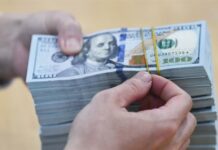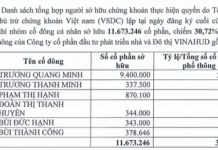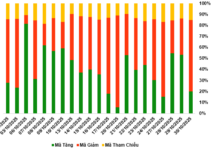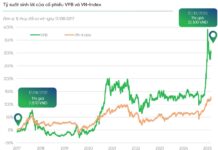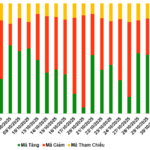Bottlenecks in the Supply Chain of Auxiliary Materials
Mr. Nguyen Quang Vu, Chairman of the Binh Duong Province Footwear and Handbag Association, stated that the biggest challenge faced by businesses is the bottleneck in the supply chain of auxiliary materials. According to Mr. Vu, major footwear-importing countries have introduced a series of new requirements, with increasingly high expectations for social and environmental responsibility.
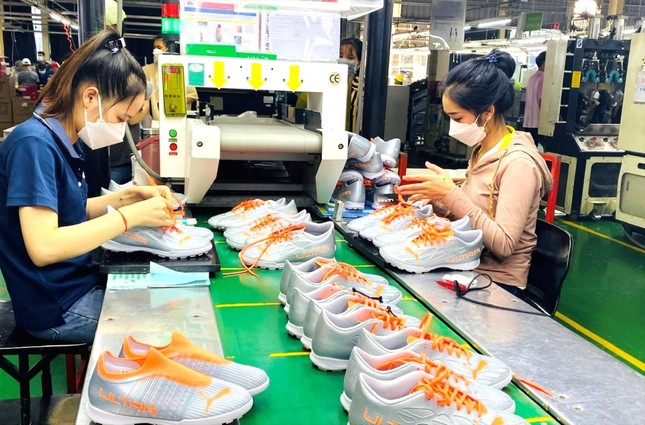
Factory workers producing shoes in Binh Duong. Photo: H.C
The European Union (EU) has begun to impose new requirements for ecological safety and sustainability. To meet the demands of this market, manufacturers must take responsibility for the product life cycle and recycle their products. They must also ensure sustainable supply chain traceability for businesses with a turnover of 450 million euros and over 1,000 employees. Additionally, there are requirements for source tracing and supply chain transparency. If importing materials from abroad, companies must ensure complete transparency in the production process.
According to the Binh Duong Province Footwear and Handbag Association, with 15 signed free trade agreements, Vietnam has access to and established trade relations with nearly 230 markets. Policy changes in import markets will significantly impact businesses in the leather and footwear industry.
As a company exporting to multiple countries, Dony Garment Company in Ho Chi Minh City also struggles to meet the criteria set by foreign partners. “We used to export to Europe, but this market now has strict regulations and criteria regarding product origin, including supply chain traceability, green production processes, and sustainable production… We face challenges in capital rotation to achieve ‘greening’. Small and medium-sized enterprises like ours struggle even more,” said Mr. Pham Quang Anh, Director of Dony Garment Company.
Mr. Pham Van Viet, General Director of Viet Thang Jean Co., Ltd. in Ho Chi Minh City, observed that the trend in purchasing behavior among large clothing importers worldwide is shifting. They now prioritize supply chains capable of multi-stage production, concentrated in one location, with complete transparency from raw materials to finished products. Meanwhile, Vietnam’s textile and garment industry lacks chain linkage, relying heavily on foreign raw materials.
Transition to Green Production
According to Mr. Nguyen Ngoc Hoa, Chairman of the Ho Chi Minh City Business Association (HUBA), developing a green and circular economy is a mandatory path and a matter of survival, not just for businesses but for the entire national economy.
To keep up with global trends, Viet Thang Jean Co., Ltd. has had to invest in machinery, transition to green production, and adopt technology to reduce costs and enhance competitiveness. The company utilizes 3D technology for design, reducing production time by a quarter compared to previous methods. They also employ laser technology for printing, cutting, and color spraying on fabrics… As a result, their capacity has tripled. Additionally, the company has installed a water treatment recycling system, producing according to European green standards.
“To support businesses, Ho Chi Minh City has proactively worked with the World Bank, tasked the Department of Planning and Investment with developing a project portfolio for the green transition, and invited investors to participate. We have also coordinated with other financial institutions to provide policy and credit support for the transition to a green economy. Furthermore, the city has implemented an investment stimulus program, in which projects for the green transition will be prioritized with 100% interest rate support for implementation.”
Mr. Nguyen Ngoc Hoa, Chairman of the Ho Chi Minh City Business Association
Mr. Nguyen Duc Thuan, Chairman of the Board of Directors of Thai Binh Investment Joint Stock Company – TBS (Binh Duong), shared that the footwear industry is presented with significant opportunities from free trade agreements. However, to seize these opportunities, it is necessary to develop supporting industries and domestic auxiliary materials. Currently, TBS has established the TBS Group Handbag Research and Development Center and is proposing the construction of an auxiliary material trading center.
Ever Tech Plastic Vietnam Co., Ltd. in Binh Duong, a company specializing in the production and processing of shoe soles and molds with over 1,800 employees across two factories, exports its products to the US and the EU. They are striving to secure orders by adopting green production standards to meet the market’s increasingly high requirements. “Despite the challenges, the company has participated in energy reduction and greenhouse gas emission reduction projects with brands like Adidas and Nike,” shared Ms. Nguyen Thi Ngoc, Deputy General Director of Ever Tech Plastic Vietnam Co., Ltd.
The leadership of the Binh Duong Province Footwear and Handbag Association emphasized that the footwear industry is considered a significant contributor to emissions during the production process, and the EU is a substantial export market. Therefore, in the next phase, businesses in this sector must adapt to comply with the EU’s new regulations.
For the sustainable development of the footwear industry, businesses have proposed the formation of a specialized industrial park for producing supporting industry products, focusing on leather tanning, technical fabrics, and mold accessories… This approach would facilitate environmental protection and centralized production, fostering the development of auxiliary industries with appropriate mechanisms and policies.





